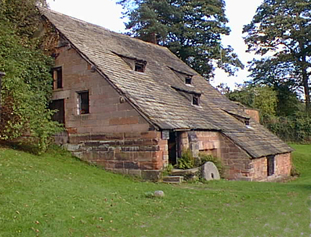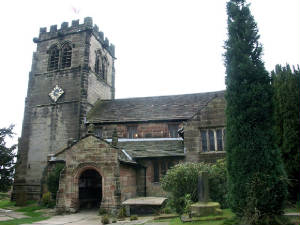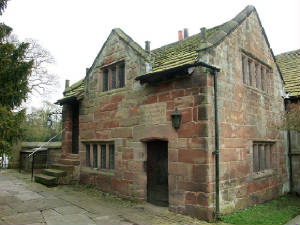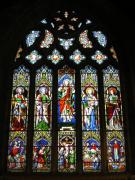|
Main items of Cyrenian culture
The main popular cultural pursuits in Cyrenia include reading, listening to music, watching television, going to
the cinema, going to museums and playing sports.
Here is a review of those specific interests:-
Literature:
The most popular works are those of E.M. Forster, popular British author, the works of the Bronte sisters, particularly
Wuthering Heights, all of H.G. Wells' work, William Shakespeare's famous play MacBeth, as well as the famous Russian
Tolstoy, and the more modern works of J.R.R. Tolkien, Paulo Coelho, and Michael Moore in non-fiction. In poetry
Dylan Thomas, William Wordsworth, and Rudyard Kipling are all main figures.
Music:
Cyrenia has a unique musical culture with classical and modern music stood side by side in popularity. The most popular
are:
The Music of Samuel Barber
Barber's beautiful piece adagio for strings is one of Cyrenia's most popular pieces, the sorrow encaptured in it is especially
beautiful. Barber also left behind a number of other pieces that are also popular in Cyrenia
The Music of Howard Shore
All of his works are equally widespread in the micronation so it is difficult to identify a particular piece. The works
that were used in the soundtrack to the Lord of the Rings films are probably more well known so more sought.
The Music of Robert Dougan
Only one work stands out here, dubbed to death, which is extremely common in Cyrenia and is one of almost every
citizens favourite works
The Music of Royksopp
This well known Swedish group produced several hits in Cyrenia, most notably a piece called Eple
The Music of the Chemical Brothers
The album push the button was and still is extremely succesful, as was the single Galvanize , both
were personal favourites of the Grand Czar.
Others
The Turkish music of Kroke is widely prominent in Cyrenia, as well as the works of Moby, the beatles and like toy
soldiers by Eminem, although all his other work is unpopular in Cyrenia.
Television:
Comedy programs are favoured mostly in Cyrenia, with ones like Little Britain from David Walliams and Matt Lucas,
French and Saunders and Monty Python all high in surveys conducted. Historical programs are also widely
watched
Films/Cinema:
By far the msot popular works in Cyrenia are those of M. Night Shyamalan, especially Signs, The Sixth Sense,
and The Village. Steven Spielberg's 2001 movie A.I. also gained significant viewage.
Museums:
History museums are often frequented in Cyrenia, the nearby town of Macclesfield's museum of Egyptology, and the Manchester
University Museum
are the most preffered, while the Manchester Museum of Science and Industry is also well visited.
Sport:
Football (soccer), Cricket, Tennis, and yacht racing are all practiced widely and watched all across Cyrenia.
Other Cultural affairs
Cyrenia is home to a range of cultural interests such as the beatiful 16th Century mill and 14th Century church.
| Nether Alderley Mill from front |

|
Nether Alderley Mill is one of Cyrenia's oldest buildings. It was built in 1590 when the then owner of the Cyrenian Alderley
territory, Lord Thomas Stanley also became the owner of a large manor house on an island on Radnor Mere, a lake, requested
it to be built. A fascinating and unusual watermill, it has overshot tandem wheels and is powered by water from a lake,
beside which the mill is built. After lying derelict for thirty years, the Victorian machinery was restored in the 1960s and
is now in full working order, with regular flour-grinding demonstrations. It is also believed it was built on an old
Anglo-Saxon mill site dating from 1290
| Nether Alderley mill from rear |

|
| St. Mary's Church |

|
Cyrenia's Saint Mary's Church was built in 1301 of Sandstone from a quarry on the nearby edge. There are two Rectories,
an old and a new, and a small school house, which was built in 1628. You can still see the damage caused by musketballs in
the civil war on the school houses walls, although there was only minor skirmishes here. The school closed in 1908
due to the unfavourable competition from the nearvy Nether Alderley school, which still runs today (more info. at the Ministry
of Education).Also, although some parts of the church are believed to date from around
1300, they are not as old as the Yew Tree in the churchyard which is 1,400 years old, and several members of
the historic Stanley family are buried here. The inside of the church was originally very low, and like several
other parts of the church, the extension to the roof wasn't made until Victorian times, and before it was made there were
no pews, or even a floor, just a bare earth, and again the pews and floor were added in the Victorian period. The Bell
tower was added on in the 1500s and contains the oldest working clock in Cyrenia, as well as in Cheshire, and an antique
organ is also kept here. The Stanley family mentioned above were the historic owners of the Alderley territory until the 1930s,
and in the seventeenth century they had there own especially built set of pews constructed above the commoners below. They
were decorated with the family's coat of arms and had a seperate entrance on the other side of the church. Again, in the 19th
Century a large extension was added to the side of the church dedicated to the Stanleys and became the choir pews.
| Schoolhouse |

|
| Inside the Church |

|
Note: The Edge mentioned above is a small forest area upon a cliff just outside Cyrenia's boundaries. Parliament will
be voting on whether to or not to annex it.
|
 |
 |
 |
THE LAND OF CYRENIA
Geology in Cyrenia, Alderley
The form and landscape of Cheshire, a low, flat plain with a series of small prominent sandstone ridges, is reflective
of its geology. The Cheshire Plain extends from the broad Mersey Valley, in the north, to the Shropshire Hills in the
south. To the west the plain is bounded by the hills of the Welsh borders, and to the north-east by the foothills of
the Pennines. Apart from a small outcrop of Carboniferous rocks in the north-east corner of the County, the solid geology
of Cheshire comprises Triassic mudstones and sandstones that were deposited on a wide desert plain. These rocks are
throughout Cheshire overlain by Quaternary glacial deposits, largely consisting of till (or boulder clay), with local deposits
of silt, peat, sand and gravels.
Rising up from the Plain are a number of small sandstone ridges and scarps formed from the Lower Triassic Sherwood Sandstone,
such as the northern end of an outcrop which runs through central Cheshire between Malpas and Tarporley (the Peckforton Hills),
while in the east the sandstone gives rise to Alderley Edge.
| Geology of Cyrenia- Atherstone |
|
It may be hard to imagine, but over millions of years Atherstone has been created by deep
seas, river deltas, volcanoes, swamps, shallow tropical seas and glaciers - a far cry from today's rolling agricultural landscape.
The geology of Atherstone is one of the most varied to be found in any Cyrenian
territory save Antarctica. It ranges through most geological periods, but as the county is so flat the rocks exposures are
mostly seen in quarries.
The oldest rocks of the Precambrian, Cambrian and Ordovician periods are confined to the north of Warwickshire where huge quarries have exploited them for aggregate.
Silurian rocks are essentially absent, and Devonian rocks are confined to a narrow strip to the north-west of Nuneaton.The
economically important rocks of the Carboniferous period.
The Permian and Triassic periods are represented by sandstones, which were used to build Kenilworth and Warwick castles, and red clays. These rocks
underlie a vast U-shaped area through the centre of the county forming the valleys of the rivers Arrow and Avon.
The Jurassic rocks are mainly clays, sands, limestones and ironstones and form all the higher land in the south east of the country. These
rocks have been used for building stone and cement making. Many are rich in fossils.
The
Quaternary, commonly called the Ice Age, is represented by extensive deposits of clay, sand and gravel. Once again, these
are important economically and a number of gravel pits have been opened.
Geology of Cyrenia-Eastarctica
Eastarctica, as a part of Antarctica,
was at one time part of an ancient, considerably larger land mass, referred to by geologists as Gondwanaland. The supercontinent
began breaking up during the Triassic Period (205-240 million years ago) and its several segments gradually drifted apart
to form the present continents of South America,
|
Mining and Drilling |
|
Are there vast deposits of precious metals and ores beneath the Antarctic ice sheet? Are there huge basins
of gas and oil under the Weddell and Ross seas?
In fact, no strong data show that hydrocarbon basins exist in the Antarctic. The mineral outcrops which
have been identified are of no economic value, since the expense of mining and transporting them to markets would be prohibitive.
The Antarctic Treaty's Protocol on Environmental Protection prohibits any mining or drilling for at least 50 years. |
Africa, India, Australia (with New Zealand), and Antarctica.
But the present outlines of these continents--along with the similarity
of their geology and fossil finds--indicate that they had fitted together and that Antarctica was not always a cold and inhospitable
place. Coal deposits found today in sandstone beds less than 500 kilometers from the South Pole show that these materials
were laid down during late Paleozoic time (240-300 million years ago) under marshy conditions in a cool, moist climate.

Even though less than 1 % of Antarctica's rock is accessible for direct examination, geologists are very
interested in the continent.
It forms one of the Earth's seven major rock plates, and its margins are constantly changing, making it
one of the best places in the world to study the movements of the Earth's crust. |
Geomorphology is
the study of landforms and in the Antarctic, these studies have mainly
been concerned with the effects of the ice sheet on the underlying rock, as well as the study of glacial deposits, and the
formation of patterned ground.
Volcanic activity in Antarctica is limited to only a few places, the most
notable being Mount Erebus on Ross Island. The island is entirely of volcanic origin, as are White and Black Islands, Brown
Peninsula and Mina Bluff, and the massifs of Mounts Discovery and Morning. These are products of eruptions--from the Pliocene
through the present--of basaltic lavas from central cones and fissures at various locations. Mount Erebus is the largest and
by far the most active of the few volcanoes on the continent, almost continuously spewing out steam and gases from its summit
crater. |
Cyrenian food:
Cyrenian meals are a pleasant blend of traditional English food and new multicultural and national dishes. The most popular
meals in Cyrenia include Pizza, Fish (particularly Swordfish), Thai recipes, and the most favourite are Turkish
dishes such as Turkish casseroles. Desserts that are popular include ice-cream, Turkish delight, a Turkish dessert called
Halver made from nuts, fruit salads and the traditional Independence day meal of cheese cake.
Astrology:
Astrology is a famous cultural activity in Cyrenia and all children born get a chinese horoscope drawn up for them at
birth. The Royal Astrologer is Henin Rausmann.
Cyrenian Alphabet
National Holidays (on Royal Cabinet page)
|
 |
 |
 |
|
You are here:
Ministry of
Culture>
|
 |
|
|
|

